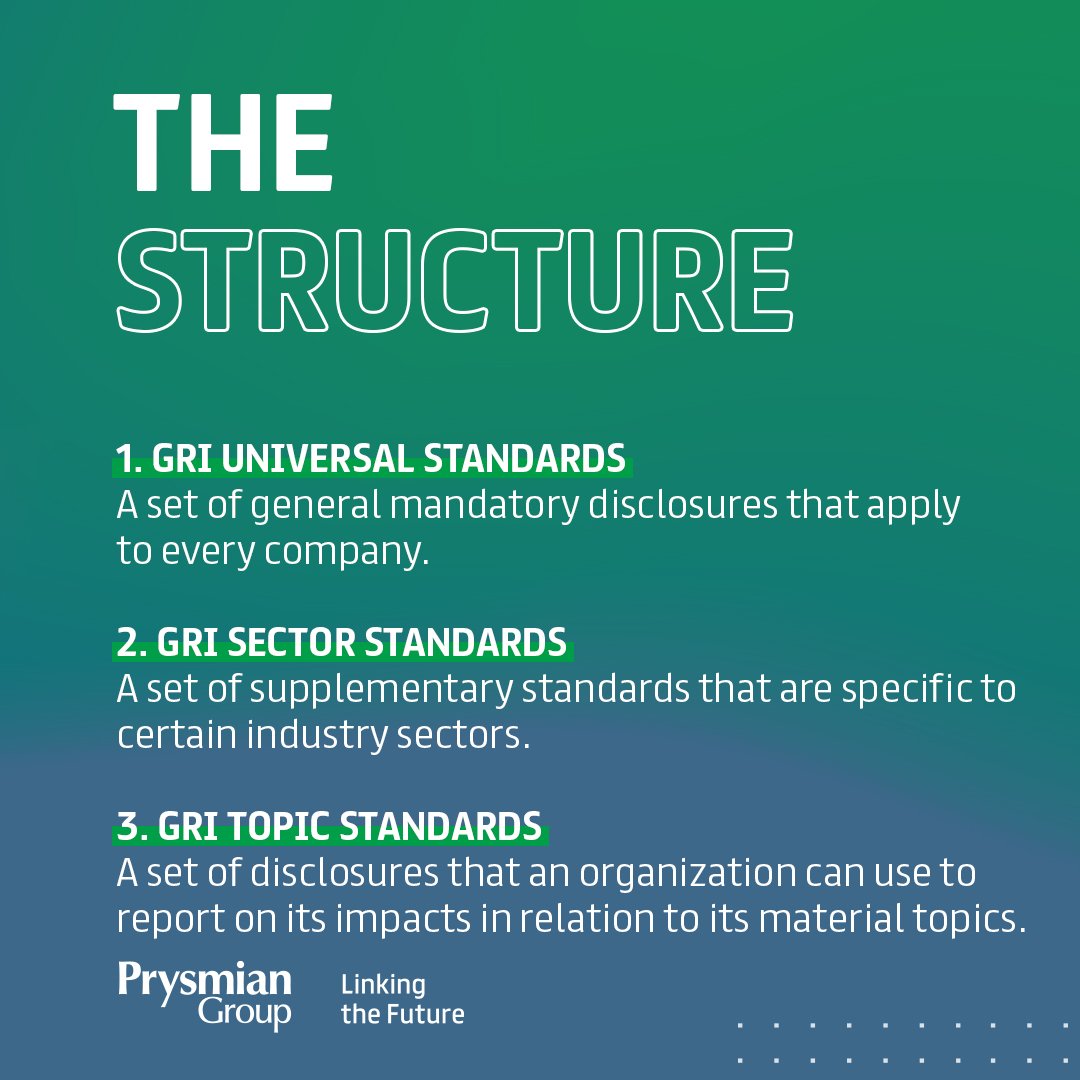The GRI standards are structured into three different sections:
- GRI Universal Standards
- GRI Sector Standards
- GRI Topic Standards
GRI Universal Standards
GRI Universal Standards, which have just been updated in 2023, are the ones that apply to every organization, and consist of:
- Foundation, which describes the purpose of the Standards and how to apply them;
- General Disclosures, which contains information about an organization’s structure and reporting habits;
- Material Topics, which explains the process through which an organization can identify the topics most relevant to its impacts.
GRI Sector Standards
Sector Standards are a set of supplementary standards that are specific to certain industry sectors. These standards have been created in order to allow the different sectors to address the unique sustainability issues and challenges they face, and to report on their sustainability performance in a more tailored and sector-specific way. By using GRI Sector Standards, organizations can thus ensure that their sustainability reporting is aligned with industry-specific expectations and best practices.
GRI Topic Standards
Finally, Topic Standards are a set of standards that focus on specific sustainability topics or issues. These standards allow organizations to focus and report on areas of sustainability that are particularly relevant to their operations and stakeholders. These standards cover a wide range of issues, from greenhouse gas emissions and biodiversity to human rights and labor practices, along with and many others. By using GRI Topic Standards, organizations can provide more detailed and specific information on the sustainability topics that are most significant to them, allowing for greater flexibility and customization in sustainability reporting.








